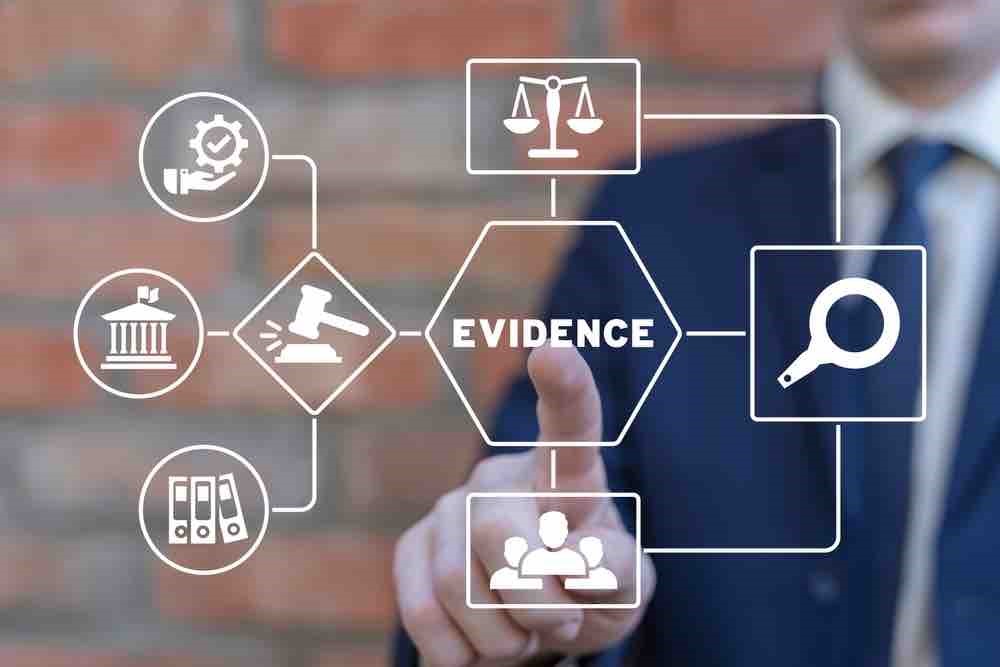The Role of Evidence in Personal Injury Cases
When pursuing a personal injury claim, the evidence you collect plays a critical role in establishing the validity of your case. The strength of the evidence you show can often make or break your claim. Whether you are a victim of medical malpractice, a car accident, or a slip-and-fall, gathering the right evidence to back your claim and show how bad your injuries and damages are is important. This page tells you everything you need to know about the different kinds of proof you need to build your personal injury case.
Table of Contents
Important Evidence for Injury Cases
1. Medical Records
In a personal injury case, your medical papers are one of the most important pieces of proof. These papers fully account for your injuries, treatments, and general health history.
It is crucial to gather:
- Emergency Room Records: If you seek immediate medical attention after the incident, obtain these records to show the nature and extent of your injuries.
- Treatment Records: Collect all records related to follow-up visits, ongoing treatments, and prescribed medications.
- Doctor’s Reports: These reports detail your diagnosis, prognosis, and the impact of your injuries on your daily life.
Medical records not only establish the extent of your injuries but also help connect your medical condition to the incident that caused it. Make sure you ask all the medical professionals who helped you for copies of these records.
2. Photographic Evidence
Visual evidence can be powerful in a personal injury case. Photographs can vividly illustrate the circumstances surrounding the incident and the injuries sustained. Be sure to gather:
- Scene Photos: If you were in an accident, take shots of the cars that were involved, any injuries that you can see, the road conditions, and any signs that are there.
- Injury Photos: Keep track of your injuries at different recovery times. These pictures can give a powerful visual image of your pain.
When taking photographs, ensure they are clear, well-lit, and capture all relevant details. This evidence can significantly strengthen your claim by providing a visual context to your narrative.
3. Witness Statements
Notes from witnesses can help your case a lot. Eyewitnesses can corroborate your account of the incident, which can be vital in establishing liability. Here’s how to effectively gather witness evidence:
- Identify Witnesses: Speak with anyone who observed the incident, including bystanders, passersby, or people nearby.
- Obtain Contact Information: Collect names, phone numbers, and addresses to follow up later.
- Written Statements: If possible, ask witnesses to provide written statements detailing what they saw. Eye witness accounts can be invaluable when corroborating your story.
Having credible witnesses can greatly enhance the reliability of your claims and counter any attempts to dispute your version of events.
4. Police Reports
An accident record from the police can be very important in many personal injury cases, especially those involving cars. This report typically contains:
- Details of the Incident: Information about the location, time, and circumstances surrounding the accident.
- Statements from Parties Involved: The police report often includes accounts from the victims and the alleged at-fault party.
- Traffic Citations: If any party received a citation for traffic violations, this information might help establish liability if the person is found guilty of the traffic offense.
Request a copy of the police report as soon as possible after the incident. This official document can lend credibility to your case and provide a neutral account of what occurred.
5. Employment Records
If your injuries have affected your ability to work, gathering employment records is essential. This evidence can demonstrate lost wages and impact on your financial stability. Key documents to collect include:
- Pay Stubs: Recent pay stubs can help quantify your lost wages due to missed work.
- Employment Verification Letters: Obtain a letter from your employer detailing your position, salary, and the time you could not work due to your injuries.
- Medical Leave Documentation: If you took medical leave, collect any documentation that reflects your absence and its duration.
By establishing the financial impact of your injuries, you can strengthen your case for compensation.
6. Personal Journal
Keeping a personal journal can be invaluable in a personal injury case. Document your daily experiences, challenges, and emotions related to your injuries. The notes can include:
- Physical Pain: Describe the pain level you experience daily and how it affects your activities.
- Emotional Distress: Note any anxiety, depression, or changes in your mental well-being since the incident.
- Impact on Daily Life: Record how your injuries have affected your ability to engage in hobbies, family activities, or work.
A personal journal adds a subjective dimension to your case, helping to illustrate the non-economic damages you have suffered.
Getting the Right Evidence Can Help Your Case
An important part of any personal injury case is gathering proof. Your claim will depend greatly on how strong and reliable your proof is. To be admissible, evidence must be relevant. By collecting medical records, photographic evidence, witness statements, police reports, insurance information, employment records, and expert testimony and maintaining a personal journal, you can build a robust case supporting your compensation claims. As you navigate this process, consider consulting with the best personal injury attorney in Houston, Texas, who can guide you on what evidence is most relevant to your specific situation and help you effectively present your case.

